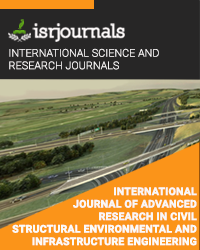estimation of hydraulic parameters from surface geophysical methods
K.Prakash,R.Hari Prasath
Published in International Journal of Advanced Research in Civil,Structural,Environmental and Infrastructure Engineering and Developing
ISSN: 2320-723X Impact Factor:1.7 Volume:3 Issue:1 Year: 28 February,2017 Pages:262-267

Abstract
A knowledge of aquifer parameters is essential for the assessment and management of groundwater resources. Conventionally, these parameters are estimated through pumping tests carried out on bore wells. Few bore wells may be available and carrying out pumping tests at a number of sites may be costly and time consuming. The application of surface geophysical methods in combination with pumping tests at a few sites provides a cost-effective and efficient alternative to estimate aquifer parameters. A surface geophysical method is used to obtain geophysical characteristics of aquifer parameters that are estimated through the pumping tests. A correlation is established between these parameters, which is subsequently used to estimate aquifer parameters from surface geophysical measurements at other sites where pumping has not been carried out. In this way, the entire investigation area can be covered to characterize an aquifer system. This study has been carried out in the Sukhinda valley, where the aquifer characteristics are required for the management of groundwater in the region..
Kewords
aquifier, groundwater, geophysical method
Reference
1. Archie, G.E. 1942. The electrical resistivity log as an aid in determining some reservoir characteristics. Amer. Inst. Min. Met. Eng., Tech. Pub. 1422, Petroleum Technology, 8 p. 2. de Lima, O.A.L., and S. Niwas. 2000. Estimation of hydraulic parameters of shaly sandstone aquifers from geological measurements. Journal of Hydrology, vol.235, p. 12-26. 3. Frohlich, R., and W.E. Kelly. 1985. The relation between transmissivity and transverse resistance in a complicated aquifer of glacial outwash deposits. Journal of Hydrology, vol.79, p. 215-219. 4. Heigold, P.C., R.H. Gilkson, K. Cartwright, and P.C. Reed.1979. Aquifer transmissivity from surficial electrical methods. Groundwater, vol.17, p. 338-345. 5. Huntley, D. 1986. Relation between permeability and electrical resistivity in a granular aquifer. Groundwater, vol 24, p. 466-475. 6. Jupp, D.L.B., and K. Vozoff. 1975. Stable iterative methods for inversion of geophysical data: Geophysics. J.RAS, 4 (Implemented by T. Harinarayana on VA 11/750 at NGRI). 7. Kelly, W.E. 1977. Geoelectric sounding for estimating hydraulic conductivity. Groundwater, vol.15, p. 420-425. 8. Kosinki, W.K., and W.E. Kelly. 1981. Geoelectric soundings for predicting aquifer properties. Groundwater, 1. vol.19, p.163-171.

